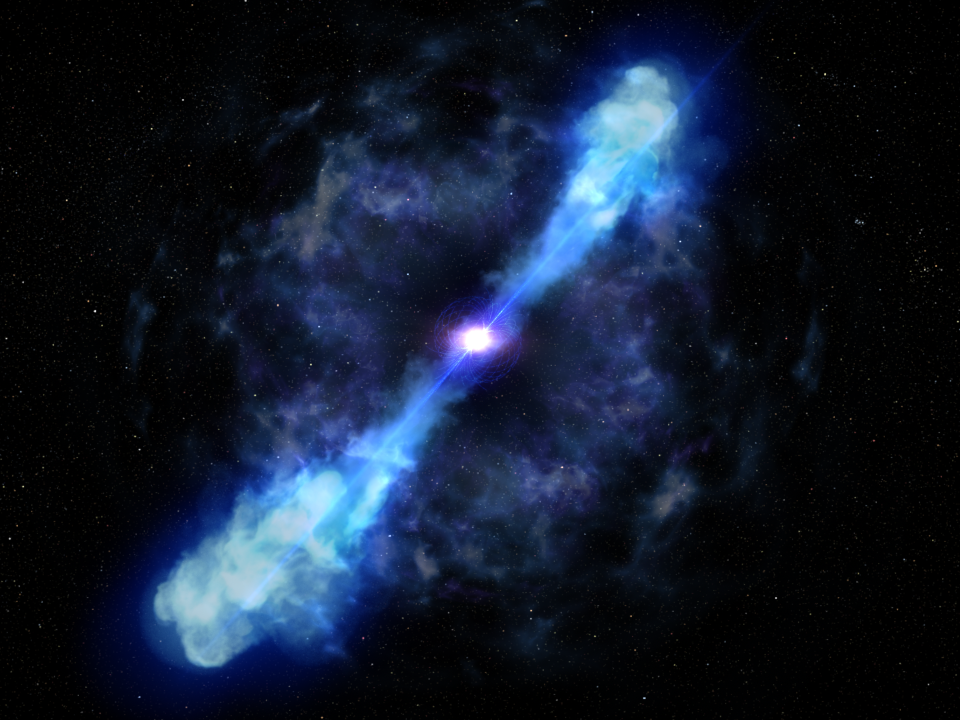This ‘kilonova’ shines so bright, it defies the odds
A strange cosmic object may be at its center.

Back in May, astronomers noted an overwhelming pulse in gamma rays on a variety of instruments. Intrigued, they scrambled to train telescopes toward the source. Their hustle paid off—using the Hubble Space Telescope, the Swift Observatory, and a handful of other ground-based scopes, they saw what appeared to be two neutron stars smacking into each other, producing a mega bright flash of infrared light.
It gets weirder. As the Northwestern University researchers note in their arXiv study (which was announced for publication in the Astrophysical Journal yesterday), the intensity of infrared light was 10 times greater than it should have been. That means the star duo probably created something strange when they collided.
“Amazingly, Hubble was able to take an image only three days after the burst,” Northwestern astronomer and lead author Wen-fai Fong said in a press release. “When Hubble looked again at 16 days and 55 days, we knew we had not only nabbed the fading [merger], but that we had also discovered something very unusual.”
Typically, when researchers see gamma-ray bursts like they did in May, they expect to find both a super bright kilonova—an afterglow made by the decaying of heavy elements that can be 1,000 times brighter than a regular nova—and a black hole. Neutron stars are roughly the same mass as our sun, but compressed down into the size of a modest city. So when two of them collide, they really pack a punch.
But there wasn’t really a ton of evidence showing a black hole was present at the collision site. “Given what we know about the radio and X-rays from this blast, it just doesn’t match up,” Fong added. “The infrared emission that we’re finding with Hubble is way too bright. In terms of trying to fit the puzzle pieces of this gamma-ray burst together, one puzzle piece is not fitting correctly.”

To explain the mismatch, the team suggests that instead of a black hole, the super-powered collision may have birthed something called a magnetar. As we’ve covered before, magnetars are gigantic, hypermassive magnets the size of cities. Prior to this discovery, no one was really sure how these mysterious objects came to be—luckily, the new study may act as a jumping off point for a better understanding of that.
If the object is indeed a magnetar, it should emit a specific wavelength of light (similar to radio wavelengths) in a few years. That’ll give the team a chance to confirm their hypothesis and continue to unravel more information about magnetars.
“We only have one confirmed and well-sampled kilonova to date,” study-author Jillian Rastinejad said in another press release. “So it is especially exciting to find a new potential kilonova that looks so different. Now that we have one very bright candidate kilonova, I’m excited for the new surprises that short gamma-ray bursts and neutron star mergers have in store for us in the future.”
